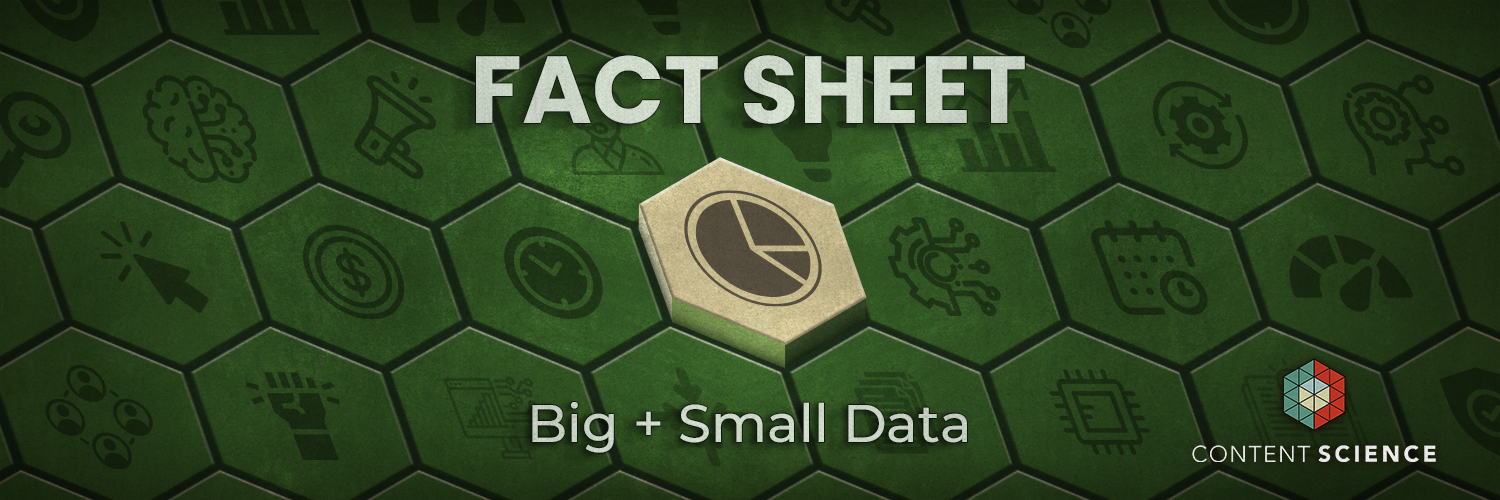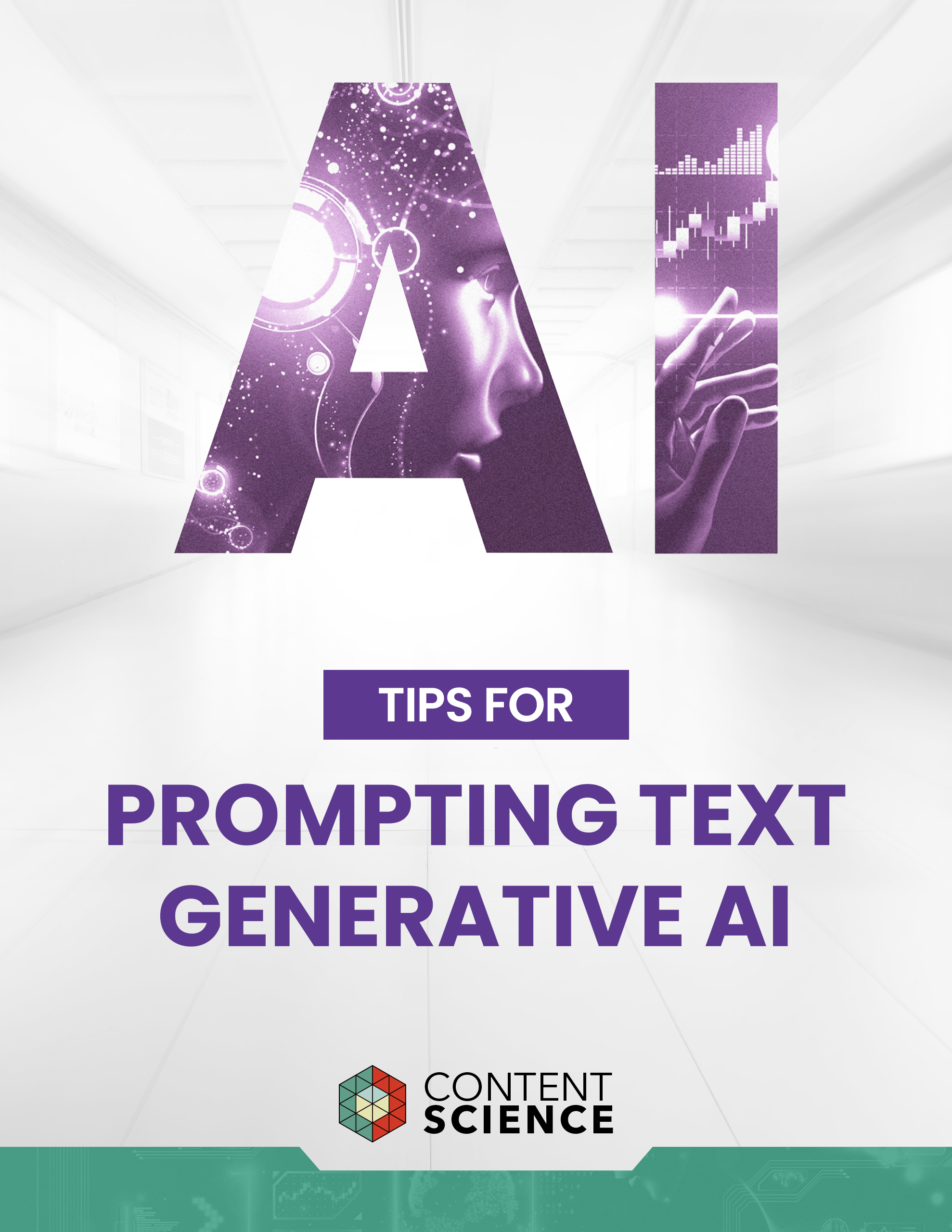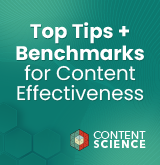
Data. We know it’s critical for publishing quality content. It offers validity and insight to content that goes beyond rhetoric, provides valuable substance through credible expertise or research, and helps you better understand both your content situation and your customers.
In the past decade or so, the scale in which data operates has changed, as has the depth, and the speed to get it. We’re now operating in an omniverse mode of the Internet and it seems everywhere you turn is an opportunity for data to be added to the mix. For content folks, the bigger question that everyone should be asking themselves isn’t where to get data, but how do I use it.
Former Deputy Director of the CIA’s Counterterrorist Center, Philip Mudd says understanding data starts with asking the right questions. “I’m not anti-data,” Mudd told Mashable. “I’m just saying we put data at the beginning of the problem too often.”
He’s right. In order to make sense of it all in the context of content, we must understand the difference between big and small data.
Big data is high-volume, high-velocity and high-variety information assets that demand cost-effective, innovative forms of information processing for enhanced insight and decision-making. – Gartner
Small data is a dataset that contains very specific attributes. Small data is used to determine current states and conditions or may be generated by analyzing larger data sets. – Forbes
Small Data: The Tiny Clues That Uncover Huge Trends by Martin Lindstrom defines it as “seemingly insignificant observations you identify in consumers’ homes, is everything from how you place your shoes to how you hang your paintings.”
Data is the most useful when it informs, not drives content decisions. – Colleen Jones, “Clout”
Jones continued in an AMA article, “Compared to big data, it’s easier to get small data reported to marketers and content teams in a way that’s easy to understand and act on.” Data can’t and shouldn’t decide things that people should. People are responsible for decisions about websites and their content. Data should never be used as a shield from that responsibility. Seismic CEO Doug Winter shares in their 2016 report Content Marketing’s Evolution: The Age of Hyper-Personalization and Automation, “Content personalization throughout the customer journey—from first-touch to close—is imperative. Much like how marketing automation disrupted the marketing landscape about a decade ago, marketers today that can execute a holistic and efficient content personalization process before their competitors do will be in a much better position to win more deals and close more sales.”
Therefore, we must start smart, and that is by starting small with data. Here are three pillars of small data success:
- Collecting and Analyzing (What is my situation?)
- Interpreting (So what does this mean?)
- Acting (Now what do we do?)
These questions lead us toward content intelligence, which Jones describes as: “Content intelligence represents the systems and software that transform content data and business data into actionable insights for content strategy and tactics with impact.” — Applied Marketing Analytics Volume 2, #2, Spring 2016
Nearly two-thirds (62%) of survey respondents reported feeling overwhelmed by the volume of incoming data, and a staggering 85% said they were unable to extract the full value from the data sources they have access to. – Econsultancy
Additionally, 79% of enterprises are not using analytics to measure their marketing campaign returns for all marketing engagements. – Kapost
This is the conundrum–marketers are overwhelmed by data, yet their jobs depend on it. So, how in content do we use data to work for us, not against us? One way is through methodically assessing which types of data are right for you. Data is especially useful in terms of B2B marketing, and 88% of B2B companies use content marketing as of October 2015 says Forbes. This is where insights on people and the data behind the consumer journey come in to play, especially considering “today’s CMO is much more focused on investing across the entire customer journey from discovery to advocacy and allocating resources equally across them,” reports IBM. A data approach can help you gather information about your efforts, then change according to the results of the findings.
Big Data, Analytics Sales Will Reach $187 Billion by 2019. – Information Week
Big data is big business. According to Fortune, in 2015, the top-paying job listings at Facebook and LinkedIn were for data scientists–not software engineers. Harvard Business Review reported that GE has hired 1,000 software engineers and data scientists to provide enhanced software and analytical skills across GE’s many businesses. GE is now approaching $1 billion in new revenue annually from their expanded software and data activities.
Because it is big business with so much information generated, caution is key. Being privy to this insight hopefully provides content producers and marketers the confidence to be selective in what data they use, understand the source behind it, and when to use it. And keep in mind that content marketing will generate $300 billion by 2019 according to Marketing Insider Group.
Fully 91% of adults agree or strongly agree that consumers have lost control of how personal information is collected and used by companies. – Pew Research Center
Big data also means online tracking, which brings up issues of trust (or mistrust) from the consumer. Content marketers must remember that the point with data is to help you see what your situation is. We like to phrase it as this: Data is your eyes, not your brain. Ultimately, we’re all still human and need to react and obtain information within the confines of ethics, no matter the end goal or what the data tells us.
It [the infographic] explains complicated concepts + data patterns with impact, and even emotion, through color, shape, and metaphor. With the help of an infographic, people can get the big picture quickly. – Content Science Review
With all that big data comes a whole lot of numbers (and oftentimes, coupled with a whole lot of confusion). The art of turning data into graphics doesn’t necessarily make the data clear. Instead, the answer lies within using the data and insights to tell a story. Sometimes that story needs illustration, sometimes not. This form of visual content should be one part of your overall content strategy, if it is not already. But just like all content and storytelling, make certain there’s a justifiable reason you’re doing it. Another benefit? People following directions with text and illustrations do 323% better than people following directions without illustrations, so the educational impact can be powerful.
In recent years, data has been described as a flood. In her book “Clout,” Colleen Jones, CEO of Content Science, offers this reminder about data:
No matter how much data or how many tools are available, people still need time to consider the data carefully.
While this flood of information can, at times, be overwhelming, data holds the incredible power to change perspective. When framed carefully and appropriately, it can be the solution to many content needs. The gentle balance between data initiatives and creative marketing opens a new realm of possibilities in content fields. We’re closely watching its evolution in the years to come, but for now, in the context of content, data’s role is an exciting one.
Events, Resources, + More
Workshop: Are You Ready for AI?
Is your organization really ready for AI at scale? Let the Content Science team guide your leaders through assessing 4 areas of readiness.
Course: Prompting Text Generative AI
Learn how to bring out the full potential of text generative AI to create impactful content from this on-demand course.
Webinar: Benchmarks for Content Effectiveness
It's not about more content. It's about more effective content. Gain tips based on Content Science's unique research + experience.
The Ultimate Guide to End-to-End Content
Discover why + how an end-to-end approach is critical in the age of AI with this comprehensive white paper.






Comments
We invite you to share your perspective in a constructive way. To comment, please sign in or register. Our moderating team will review all comments and may edit them for clarity. Our team also may delete comments that are off-topic or disrespectful. All postings become the property of
Content Science Review.